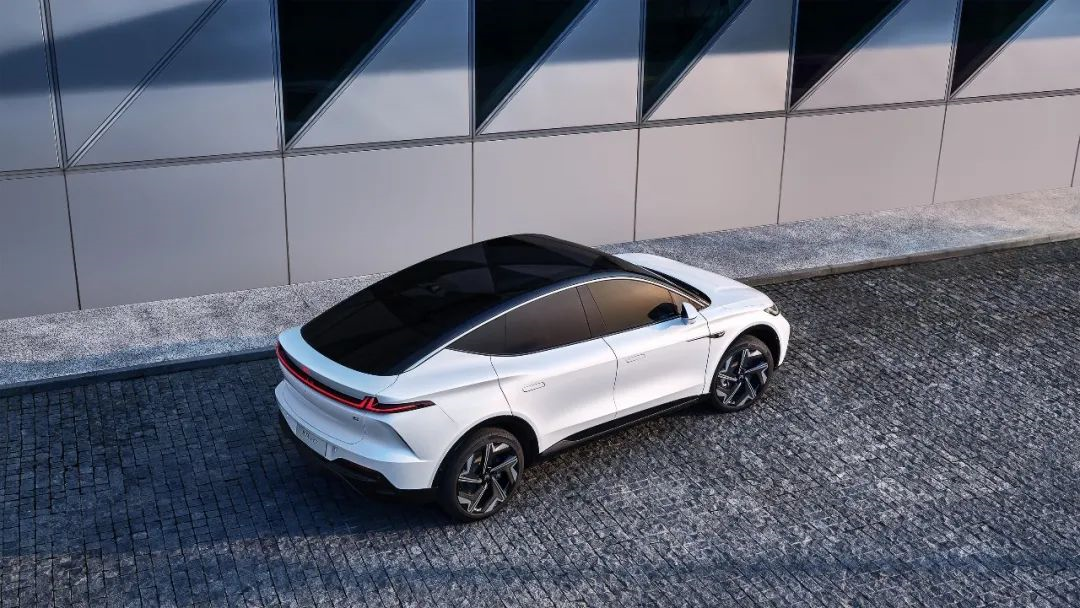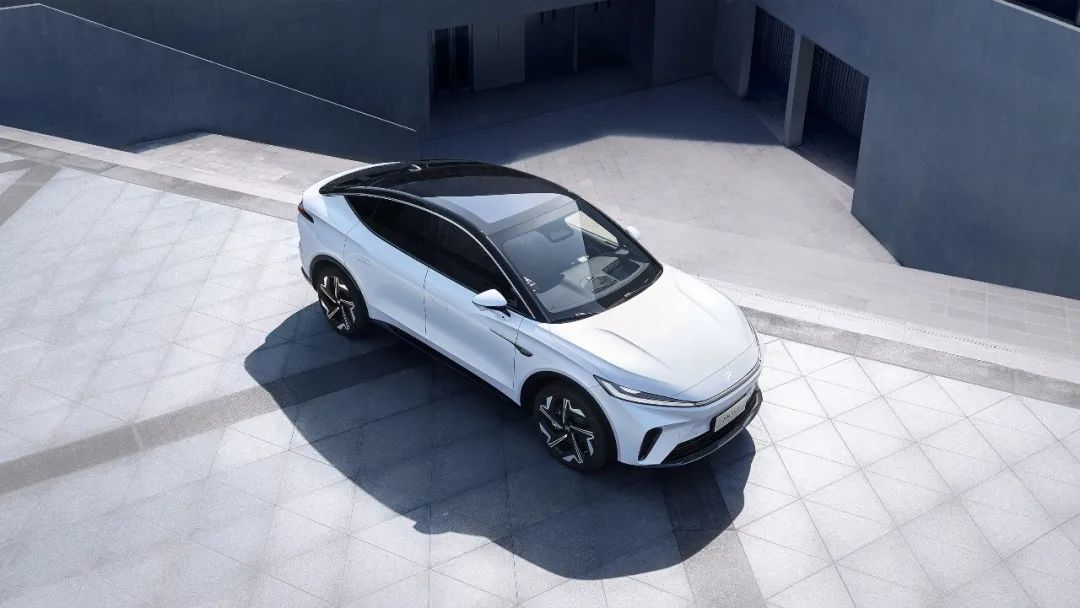Author: Michelin
Before the last day of 2022, we may not be able to determine which car will truly reign as the king of 2022. On the one hand, the second-generation products of the new forces are all coming out, and the new and old alternate; on the other hand, the new self-owned brands are catching up vigorously. The launch of intelligent vehicles has become a close-range physical confrontation of configurations.
I participated in such a release event two days ago: without the convoluted selection combinations, paid upgrade configurations, seemingly good-looking low-end options, and high-end intelligent driving functions that require long waiting periods… the FEIFAN R7 debuted in a very direct way.

It’s said that traditional car companies have many routines, but nowadays even new forces have begun to play with naming methods like “pro, plus, max,” and their SKU complexity is becoming more and more similar to traditional car companies. Instead, the new and upcoming self-owned brands are taking the route of “less routine, more sincerity.”
This also blurs the brand boundaries between the so-called new forces and self-owned brands, and the new products of intelligent vehicles have returned to the original value of speaking by strength.

High-end Intelligent Driving is not a “Futures”
I don’t know when it started, but lidar has become a symbol of whether a car configuration is “top-notch” or not, and whether or not it has lidar and how many lidars it has become a gimmick of new cars. We completely ignore the long wait for high-end assisted driving that is closely related to lidar. The hardware and high-end intelligent driving of top-level configurations have become a kind of “futures.”

This is certainly a choice made under the current technology and regulatory limitations, but allowing consumers to experience high-end intelligent driving that is ready-to-use and without waiting is the original intention of every consumer who chooses to pay for high-end intelligent configurations.

The FEIFAN R7 has chosen such an intelligent driving method that does not require waiting, allowing the software and hardware of high-end navigation assistance functions to be delivered with the vehicle.
To achieve simultaneous delivery of software and hardware, the RisingAuto R7 is equipped with three top-notch perception hardware. This includes China’s first mass-produced PREMIUM 4D imaging radar, four 8-million-pixel high-definition cameras, eight 3-million-pixel cameras, and one 1550nm LUMINAR laser radar. Additionally, it uses the top intelligent driving chip NVIDIA Orin X for optimal performance.
As an example, the PREMIUM 4D imaging radar, which is mass-produced for the first time in China, provides better detection capabilities for stationary obstacles and slow-moving obstacles compared to traditional 3D millimeter-wave radar as it adds the longitudinal Z-axis.

With top-notch perception hardware and sensors, the effectiveness of this “weapon” relies on the strength of its software.
On the software side, the RisingAuto R7 uses its own self-developed Full Fusion algorithm. On one hand, the data perceived by laser radar, 4D imaging radar, and cameras are pre-fused to determine obstacles and make decisions. On the other hand, the vision, millimeter-wave and laser radar independently perceive the environment, and the results obtained independently are post-fused. Additionally, it integrates high-precision map information in the RISING PILOT navigation function.
This achieves both high accuracy perception and reduced requirements for computing power and neural network for the perception system, thereby enhancing the fundamental capability of RISING PILOT.
With a combination of strengths and weaknesses, advanced assisted driving systems are no longer just “futures” as software and hardware are delivered together.
Intelligent Cabin: Aiming for experience, not just loaded features
This year’s intelligent cars have made significant improvements in screen quality and technology, with a growing trend towards smartphone-level experience. For example, both the LI L9 and NIO ET7 feature screen technologies like OLED and AMOLED respectively, offering excellent pixel density.


In terms of cockpit, FEIFAN R7 adopts RISING MAX 3+1 giant screen, a 43-inch wide screen in the shape of EQS and a Huawei AR-HUD that is the world’s first mass-produced.

Among them, the control screen is a 15.05-inch car-grade AMOLED ultra-clear central control screen. The instrument screen and the co-pilot screen are 10.25-inch and 12.3-inch MiniLED screens respectively. It is also the only model so far this year that has large AMOLED and MiniLED screens at the same time.

According to the practitioner of the cockpit screen supplier who revealed to GeekCar, the 43-inch triple screen loaded on the FEIFAN R7 is 1.5 times the price of the same level of model screens in the industry. In terms of cockpit hardware, FEIFAN R7 can be said to have reached the ultimate level.
However, stacking materials is only a means, and what kind of experience improvement can be brought under the stack is what everyone is more concerned about.

Taking the two screens on the FEIFAN R7 as an example, the central control screen uses a car-grade AMOLED ultra-clear central control screen, which can take advantage of the characteristics of AMOLED flexible screen transmission rate and high color uniformity to better present vehicle information on large screens;
The MiniLED screens of the instrument screen and the co-pilot screen use zone backlighting technology. The individual light source is smaller, which can solve the pain points of the reflection and dazzling of the instrument information and co-pilot entertainment information under strong light.
 On the software side, the RisingAuto R7 is equipped with the mainstream Qualcomm 8155 chip for the cockpit, and comes with the RISING OS smart cabin interaction system. With the intuitive interaction design concept of “zero thinking,” the flat card-style UI design and intuitive icon design can be seen on the car’s interface, as well as customizable quick cards and dock bar, reducing the threshold for operating the in-car system. The flat hierarchy of the car system and the more intuitive interaction concept are also a trend that can be seen in more and more cockpits, which is more in line with the habits of driving.
On the software side, the RisingAuto R7 is equipped with the mainstream Qualcomm 8155 chip for the cockpit, and comes with the RISING OS smart cabin interaction system. With the intuitive interaction design concept of “zero thinking,” the flat card-style UI design and intuitive icon design can be seen on the car’s interface, as well as customizable quick cards and dock bar, reducing the threshold for operating the in-car system. The flat hierarchy of the car system and the more intuitive interaction concept are also a trend that can be seen in more and more cockpits, which is more in line with the habits of driving.
One interesting point is that “what you see is what you can touch,” and there is interaction between the 3+1 screens in the cockpit and the screens and the vehicle itself. For example, the content can be switched between the central control screen and the co-driver screen by swiping with three fingers. After experiencing the three-finger switch operation between the central control screen and the co-driver screen on site, it was indeed very smooth.
It seems that whether it’s the car infotainment screen, AR-HUD, 8155 chip, or the new operating system, the so-called “material stacking” is just for a better experience.
Going to the gas station to change the battery: The battery swapping camp strikes again
Power supplement is an eternal pain point for electric cars. On one hand, automakers are vigorously laying out 800V and super-fast charging technologies. On the other hand, the battery swapping camp is also growing larger. If the battery swapping camp was only supported by NIO a few years ago, there are more new faces supporting battery swapping this year, such as EVGO released by CATL at the beginning of the year, and RisingAuto R7 which supports battery swapping technology and a separate battery and vehicle system.
Battery swapping is a mode of moving forward with a heavy load, and the number and density of battery swapping stations directly affect whether battery swapping is convenient. The simplest way to make battery swapping as convenient as refueling is to go to the gas station to swap batteries.
Jeenneng Smart Energy, which provides battery swapping services for the RisingAuto R7, was jointly established by SAIC Group, Sinopec, PetroChina, CATL, and Shanghai International Automobile City. With the support of “Sinopec and PetroChina,” there are over 50,000 gas stations across the country waiting to be transformed into comprehensive power supplement stations, which solves the problem of battery swapping station layout and battery safety. For battery swapping stations, transforming existing gas stations into comprehensive power supplement stations is a win-win.Translated English Markdown text with HTML tags:

According to RisingAuto’s plan, nearly 40 comprehensive service energy stations will be built within 2022, and it is expected to build 300 in 2023. The scale will reach nearly 3,000 by 2025.

In addition, RisingAuto R7 has a battery swapping architecture as standard throughout the series, supporting a vehicle purchase mode or a battery rental mode with a car-electric separation business model, which reduces the threshold for buying cars.
The Upgrade of Smart Cars is Becoming More and More Exciting
On the last day before the holiday, I was writing an article while colleagues were watching the last new car launch event in September. This is a true portrayal of September that has just passed: there are many strong players and they confront each other.
In this month, there are both domestic brands like RisingAuto R7 and new generation products of emerging forces such as Ideall L8 and XPeng G9. Each product has added plenty of horsepower, which upgrades the competition in the smart car market, especially in the smart mid-to-large-size SUV segment.

Under this competition, RisingAuto R7 seems to be a product that is tailored to the “barrel effect”: the intelligent cockpit, intelligent driving, and power supplement are all built above the industry average. Some may feel that such an all-rounded product seems to lack a little bit of personality, but for consumers, the practicality of all-rounded products may be something that “personality” cannot replace.

In the upgrade competition of smart cars, we see scenes that were difficult to see in the past: the emerging force product matrix is growing, inevitably playing the same trick; the domestic brands, after a period of “cultural adaptation,” finally got rid of shadows of parent brand fuel cars and started to focus on product and design. Many times, they are more aggressive and bold than what we thought new forces would be.
Smart cars are no longer divided into “new” and “old” camps, but gradually returning to the original value of cars, where intelligence is no longer a fanciful idea but an experience-centric focus.
This article is a translation by ChatGPT of a Chinese report from 42HOW. If you have any questions about it, please email bd@42how.com.
